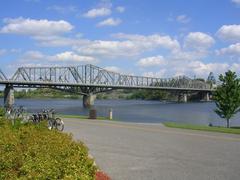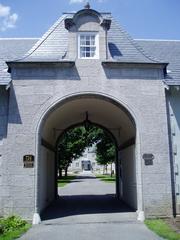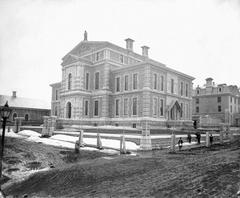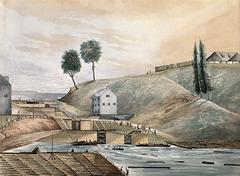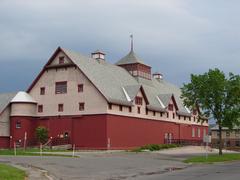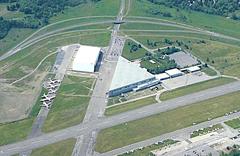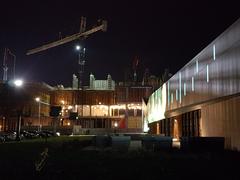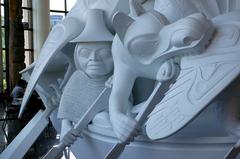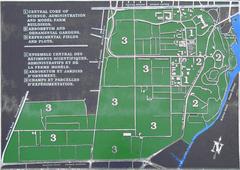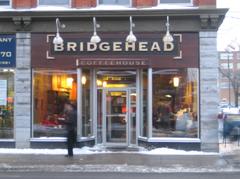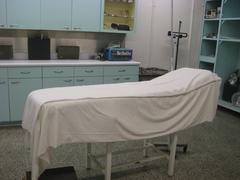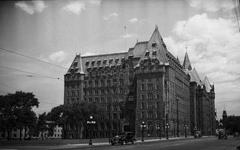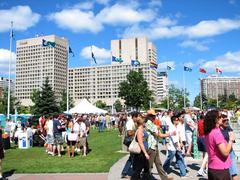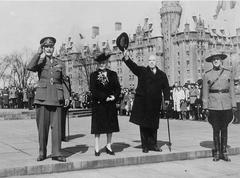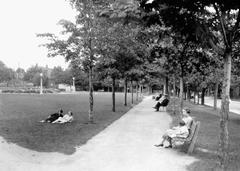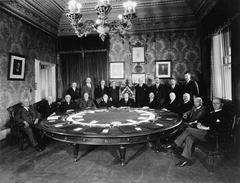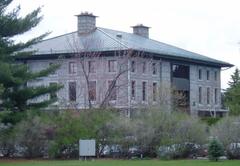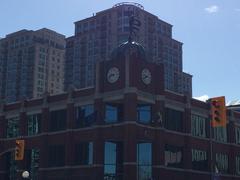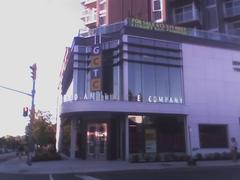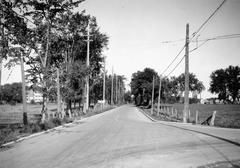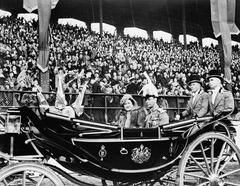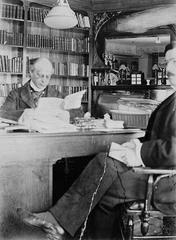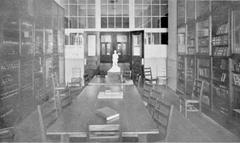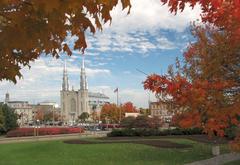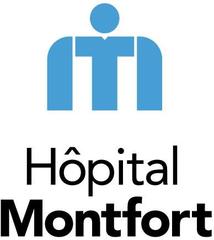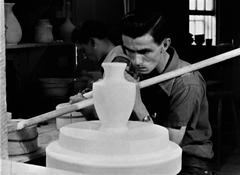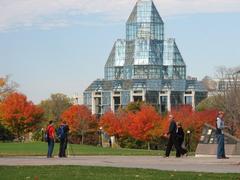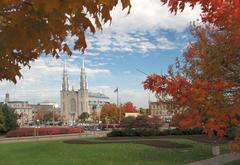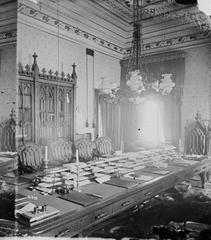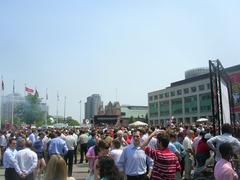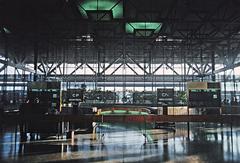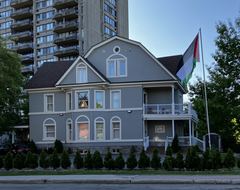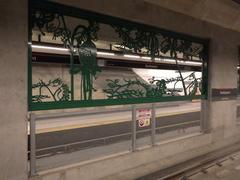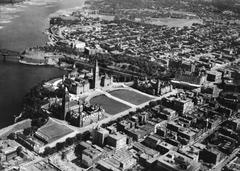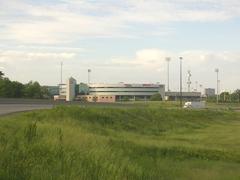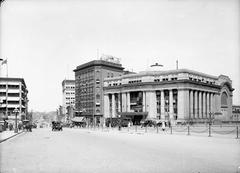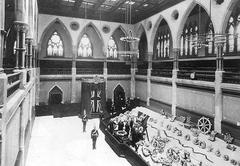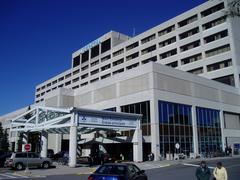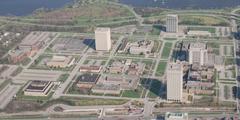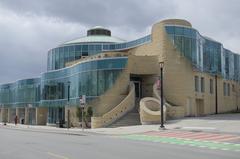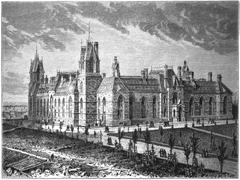Ottawa Central Station: Visiting Hours, Tickets, and Guide to Ottawa Historical Sites
Date: 15/06/2025
Introduction
Ottawa Central Station, a landmark of Canadian history and architecture, is integral to the story of Ottawa’s growth as the nation’s capital. Once known as Union Station, it now serves as the Senate of Canada Building and stands as a testament to over a century of transportation evolution, civic life, and heritage preservation. Whether you seek detailed historical context, practical visitor information, or insights into nearby attractions, this guide provides a comprehensive overview to help you make the most of your visit to Ottawa Central Station and the city’s vibrant historical core.
Table of Contents
- Introduction
- Historical Evolution and Architectural Heritage
- Role as Ottawa’s Rail and Civic Hub
- Preservation and Adaptive Reuse
- Visiting Hours, Tickets, and Accessibility
- Getting to Ottawa Central Station
- Station Facilities and Services
- Nearby Attractions and Visitor Tips
- Practical Travel Tips
- Seasonal Considerations
- Frequently Asked Questions (FAQ)
- Summary and Staying Updated
- References
Historical Evolution and Architectural Heritage
Ottawa Central Station was originally commissioned in the early 20th century as Grand Trunk Central Station, later known as Union Station. The need for a unified rail terminal arose from the city’s fragmented rail system, which hampered both transportation and urban development. Charles Melville Hays, president of the Grand Trunk Railway, played a pivotal role by acquiring the Canada Atlantic Railway in 1904, paving the way for a grand central terminal near Parliament Hill (Heritage Ottawa; Ottawa Citizen).
The station’s Beaux-Arts design, by Ross & MacFarlane, showcased monumental columns, domes, marble interiors, and classical detailing. Opened in 1912 alongside the Château Laurier hotel, it quickly became an iconic architectural and civic landmark in downtown Ottawa (Heritage Ottawa; Ottawa Citizen; City of Ottawa PDF).
Role as Ottawa’s Rail and Civic Hub
For over five decades, Union Station was Ottawa’s principal passenger rail terminal, connecting the city to Toronto, Montreal, Quebec City, and beyond. Its central location at 2 Rideau Street, adjacent to Parliament Hill and the Rideau Canal, made it a focal point for national events, political arrivals, and everyday travel (Ottawa Future).
The station’s grand halls witnessed historic moments, including royal visits and state occasions, further cementing its place in Canada’s political and cultural life (apt613.ca).
Preservation and Adaptive Reuse
Urban renewal in the mid-20th century, notably the Greber Plan, led to the relocation of rail services to a new site at Tremblay Road in 1966. The original Union Station faced demolition, but public advocacy ensured its survival and transformation. It was first repurposed as a Visitors Centre for the 1967 Centennial, then as the Government Conference Centre, and finally as the Senate of Canada Building, preserving its Beaux-Arts grandeur (Heritage Ottawa; Senate of Canada).
The building now forms part of the Confederation Square National Historic Site and is a classified federal heritage building.
Visiting Hours, Tickets, and Accessibility
- Visiting Hours: The Senate of Canada Building is open to the public primarily during special events such as Doors Open Ottawa (typically held in late May or early June) and during scheduled guided tours. There are no regular daily visiting hours for walk-in visitors due to its ongoing governmental function.
- Tickets: Admission during public events is free. Some guided tours may require advance reservation. Check the Senate of Canada website and Doors Open Ottawa for current details.
- Accessibility: The building is wheelchair accessible during public events and tours. For specific needs, contact the tour organizers in advance.
Getting to Ottawa Central Station (Current VIA Rail Terminal)
The present-day Ottawa Central Station, located at 200 Tremblay Road, serves as the city’s main intercity rail hub. Designed in the International Style by John B. Parkin, the station features an airy, glass-clad façade and a spacious, accessible concourse (Wikipedia).
Access and Transport Options
- By Train: VIA Rail connects Ottawa to Toronto, Montreal, Quebec City, and other cities. Check VIA Rail for schedules and ticketing.
- By Transit: The Tremblay O-Train station (Confederation Line) is adjacent, offering rapid light rail service to downtown and major attractions (OC Transpo).
- By Car: Accessible from Highway 417 (Exit 117), with ample paid parking.
- By Taxi/Rideshare: Taxi stands and rideshare pick-up/drop-off points are at the main entrance.
- By Bicycle: Multi-use pathways and bike racks are available (Adventures.com).
Station Facilities and Services
- Ticketing: Staffed VIA Rail counters and self-serve kiosks.
- Waiting Areas: Climate-controlled lounges, free Wi-Fi, charging stations.
- Food and Beverage: Café, vending machines, and nearby dining options.
- Luggage: Checked baggage, baggage carts, and secure lockers.
- Accessibility: Elevators, ramps (including a spiral ramp), accessible washrooms, and tactile guidance paths.
- Restrooms and Baby Care: Clean, accessible facilities and baby-changing stations.
- Car Rentals: On-site or nearby services.
- Parking: Short-term and long-term paid parking, with accessible spaces (Wikipedia).
Nearby Attractions and Visitor Tips
Ottawa Central Station’s location provides easy access to the city’s top historical sites:
- Parliament Hill: Free guided tours and events (Ottawa Tourism).
- Rideau Canal: UNESCO World Heritage Site, great for walks and boat tours.
- Château Laurier: Historic hotel with architectural and historical significance.
- ByWard Market: Food, shopping, and nightlife in a vibrant district.
- National Gallery of Canada: Extensive art collections.
For a richer experience, consider guided walking tours focusing on Ottawa’s railway and architectural heritage.
Practical Travel Tips
- Arrive Early: Arrive at least 30 minutes before departure, especially if checking baggage.
- Check Schedules: Confirm train times with VIA Rail.
- Travel Documents: Carry valid ID and necessary travel documentation (Penguin and Pia).
- Weather: Ottawa’s winters are cold and snowy; dress appropriately (Adventures.com).
- Accessibility Assistance: Contact VIA Rail or station staff in advance for mobility needs.
- Local Transit: OC Transpo day passes are useful for exploring Ottawa (Ottawa Tourism).
- Lost and Found: Report lost items to station staff or VIA Rail customer service.
Seasonal Considerations
Ottawa features four distinct seasons. Plan for weather extremes—cold winters (average January temperature: -14°C) and warm, humid summers. Major festivals like Canada Day, Winterlude, and the Tulip Festival attract higher visitor numbers; book transportation and accommodations early (Ottawa Festivals).
Frequently Asked Questions (FAQ)
Q: What are the visiting hours for the Senate of Canada Building (historic Ottawa Central Station)?
A: Public access is during special events such as Doors Open Ottawa. Visit the Senate of Canada or Doors Open Ottawa websites for current schedules.
Q: Is there an entrance fee or ticket required?
A: Admission is usually free during public events; some guided tours may require advance booking.
Q: Is the station accessible for visitors with disabilities?
A: Yes, both the Senate of Canada Building (during events) and the Tremblay Road VIA Rail station are fully accessible.
Q: How can I get to downtown Ottawa from the VIA Rail station?
A: Take the Tremblay O-Train station for quick access to downtown and major attractions.
Q: Where can I buy train tickets for Ottawa departures?
A: Tickets are available at the VIA Rail station, self-service kiosks, and online (VIA Rail).
Q: Are luggage storage and food services available?
A: Yes, secure lockers, a café, and vending machines are provided.
Summary and Staying Updated
Ottawa Central Station’s historical and architectural legacy continues to shape the city’s identity. Its transformation from a bustling railway terminal to a preserved heritage site and the seat of the Senate symbolizes Ottawa’s commitment to honoring its past while embracing the future. For visitors, the station offers a unique entry point to explore Ottawa’s rich history, with proximity to major attractions and comprehensive services at the current VIA Rail terminal on Tremblay Road.
Stay informed about special events, public access, and new tours by visiting official resources:
For curated maps, audio tours, and exclusive historical content, download the Audiala app and follow us on social media for the latest updates.
References
- Ottawa Central Station: Visiting Hours, Tickets, and Historical Guide to Ottawa’s Iconic Railway Hub, 2025, Heritage Ottawa (Heritage Ottawa)
- Ottawa Central Station: Visiting Hours, Tickets, and Historical Guide to Ottawa’s Iconic Railway Hub, 2025, Ottawa Citizen (Ottawa Citizen)
- Visiting Ottawa Central Station: History, Tickets, and Visitor Guide, 2025, apt613.ca (apt613.ca)
- Visiting Ottawa Central Station: History, Tickets, and Visitor Guide, 2025, City of Ottawa (City of Ottawa PDF)
- Visiting Ottawa Central Station: History, Tickets, and Visitor Guide, 2025, Ottawa Future (Ottawa Future)
- Visiting Ottawa Central Station: What Tourists Need to Know, 2025, VIA Rail (VIA Rail)
- Practical Visitor Tips for Ottawa Central Station: Location, Access, and Amenities, 2025, Wikipedia (Wikipedia)
- Doors Open Ottawa, 2025, Doors Open Ontario (Doors Open Ottawa)
- Senate of Canada official website, 2025 (Senate of Canada)
- Additional local guidance: Adventures.com, Penguin and Pia, Ottawa Festivals

